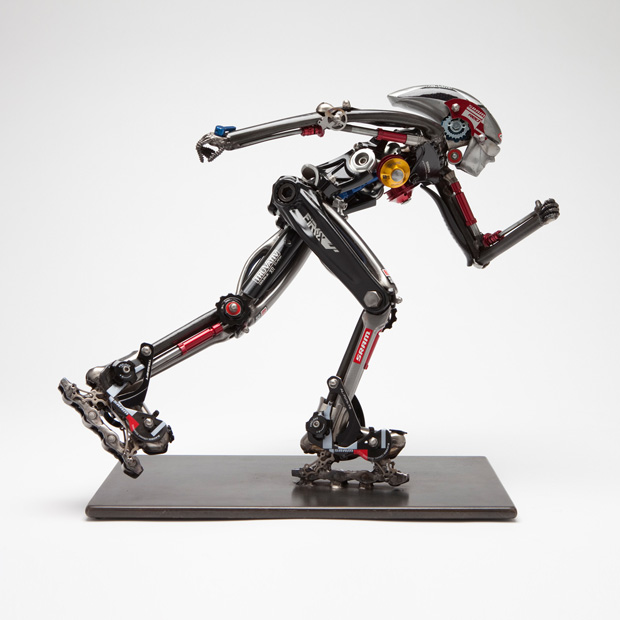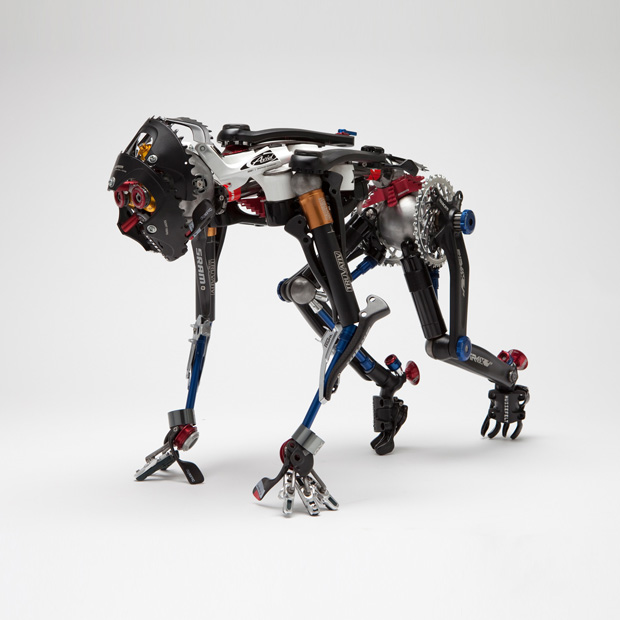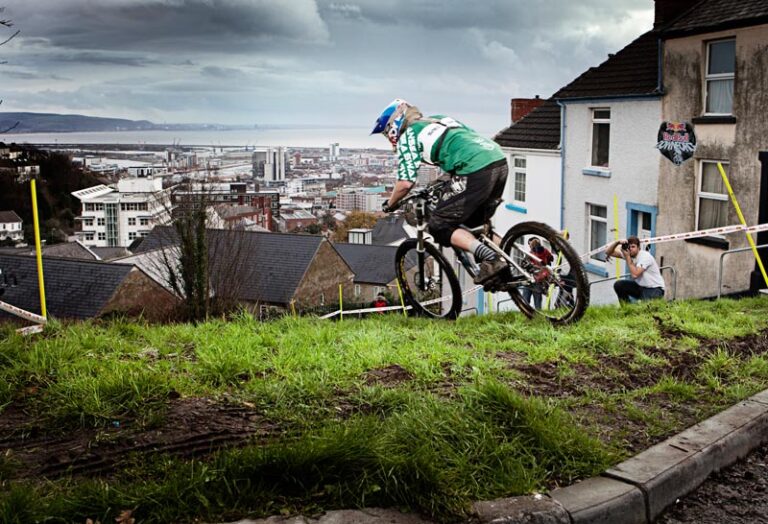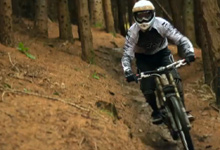A group of leading contemporary artists have accepted the challenge to create unique pieces of art using only SRAM bicycle components. Each piece will be auctioned and the proceedings donated to the World Bicycle Relief.
Now approaching its grand finale at Chicago’s Gallery 1028 on November 30th leading figures in the cycling world will be viewing the artwork, meeting the artists, and bidding on favorite pieces, directly supporting the mission of World Bicycle Relief.
Best of all, even if you can’t join the event in Chicago, you can still bid online from anywhere in the world! To see how to participate in the auction online: sram.com/partproject/auction.php

Powerglide
Artist: Lewis Tardy
The theme of this piece was motivated by the mission of World Bicycle Relief. Two concepts I wanted to express are empowerment and mobility. The physical parameters set for the SRAM competition helped to guide my creative thought process on the possibilities for this sculpture. Working within my established style and technique, which involves, responding to the available materials, cutting and assembling various parts to fit my vision, I was inspired to create a competition inline skater.

The Sprinter
Artist: Jesse Meyer
The bicycle was developed to aid us in one of our most basic needs, a way to move efficiently from one place to the next. Henceforth the purpose of their benefit, SRAM’S parts are often affiliated with athleticism and racing, and are developed for the purpose of increasing the bicycle’s efficiency and performance. Since the bike is often thought of as an extension of the human body, and the body remains our most basic means of transportation, I thought to apply SRAM’s performance parts to an athletic human form, posed to launch into a race. Thanks to SRAM for your efforts towards and important and meaningful cause.

Moto
Artist: Steve Radtke
I knew what my box of parts was going to become. The main “frame” pieces of my motorcycle jumped out at me immediately. The top fork piece as a single-sided swingarm was too perfect to resist. As I worked, I stopped seeing them as full-scale bike parts. My goal was to solve each design problem with the provided bike parts whenever possible. And with zero welding skill, I needed to use strategic assembly points to hold it all together firmly. Some details needed a custom solution, though. A small leather seat gives a proper perch. And a couple of cannibalized flashlights provide LED headlights powered by a hidden battery pack.






